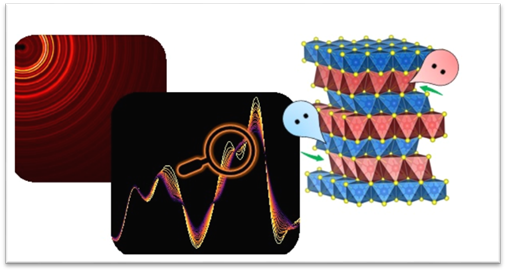Ministry of Science & Technology
Metavalent chemical bond holds key to enhance the thermoelectric performance in quantum materials
प्रविष्टि तिथि:
03 MAY 2023 12:50PM by PIB Delhi
Metavalent bonding—a new type of chemical bonding in solids, can be used to tailor the thermoelectric performance in quantum materials and efficiently convert waste heat to electricity, which could show a new direction for the country’s newly launched Quantum Mission.
Generating electricity from waste heat holds an exciting prospect for green energy production. Finding high-performance thermoelectric materials for this purpose requires materials with a magical recipe of properties that can conduct electricity like a metal, heat like a glass, and exhibits the Seebeck coefficient like a semiconductor.
The performance of a thermoelectric material is evaluated based on a dimensionless index related to electrical resistivity, Seebeck coefficient, and thermal conductivity called zT. The higher the zT, the higher is the efficiency. Increasing zT is extremely challenging due to the contradicting interdependences between the material constants that constitute zT, like the electrical and thermal conductivity, Seebeck coefficient, etc. Hence this index needs to be optimised.
To realize this challenging goal, Prof. Kanishka Biswas and his Integrated Ph.D. student Ivy Maria from JNCASR, Bengaluru, an autonomous institute of the Department of Science and Technology (DST), turned to the biggest tool in the kit of chemists- the chemical bonding in a solid. They needed a chemical bond that has properties of both the bonding present in metals (for good electrical conductivity) as well as those found in glasses (for low thermal conductivity), demanding for fine tuning between electron localization (covalency) and delocalization (metallicity). Such a bonding synergy is found in materials with a unique type of bonding called metavalent bonding. Metavalent bonds are multicentric soft bonds with less than 2e- shared between the bonding atoms, defying the classical octet rule in chemistry. But, at this juncture, they encountered an inverse design problem -- knowing the bonding/properties can they predict the compound(s) that can exhibit them?
Their search for materials with excellent electrical properties drew them to quantum materials such as topological insulators --- an exotic family of compounds that have conducting surface states but insulating bulk states. They chose TlBiSe2- a renowned topological insulator, for investigation. One of the reasons behind choosing this was that the material showed lattice shearing due to dual lone pair-induced local distortion mediated by metavalent bonding. They have analysed the local distortion by synchrotron X-ray pair distribution function experiment done in Petra-III, DESY, Germany, with the support of the DST Synchrotron support program.
An analogy to understand local distortion preserving the average crystal structure is a classroom of seated row/column-wise students. From the teacher’s view (average structure), they appear to be sitting in a perfect straight line, but if we look from an individual student’s view (local structure), we will see that the students in front/back are not exactly ahead/behind but slightly shifted. Atoms in a locally distorted crystal show this behaviour wherein their positions are not perfectly ordered as expected but are slightly distorted.
Through collaborative work with other authors, Ms. Raagya Arora, Dr. Moinak Dutta, Dr. Subhajit Roychowdhury, and Prof. Umesh Waghmare from JNCASR; they confirmed that TlBiSe2 indeed demonstrates metavalent bonding. The distorted structures have energies very close to that of the undistorted structure of TlBiSe2, and at room temperature, the compound can easily shuttle between the various energetically accessible configurations.
Thus, TlBiSe2 possesses a degenerate manifold of ground states, facilitating a fundamentally new way of intrinsically scattering phonons (quasi-particles that carry heat in a solid) via lattice shearing availed by the underlying metavalent bonding to realize low thermal conductivity. Validating the chemical bonding guided strategy, TlBiSe2 showed a zT of around 0.8, which is the highest reported to date amongst n-type thallium chalcogenides.
Their work provides fundamental insights on how novel chemical bonding can be used to optimize thermoelectric performance in quantum material and how, by rational chemical designing, intriguing emergent properties can be realized in quantum materials towards which India’s Quantum Mission is working. The work has recently been published in Journal of American Chemical Society (JACS).
Publication link: doi/10.1021/jacs.3c02146

<><><><><>
SNC/PK
(रिलीज़ आईडी: 1921582)
आगंतुक पटल : 1748